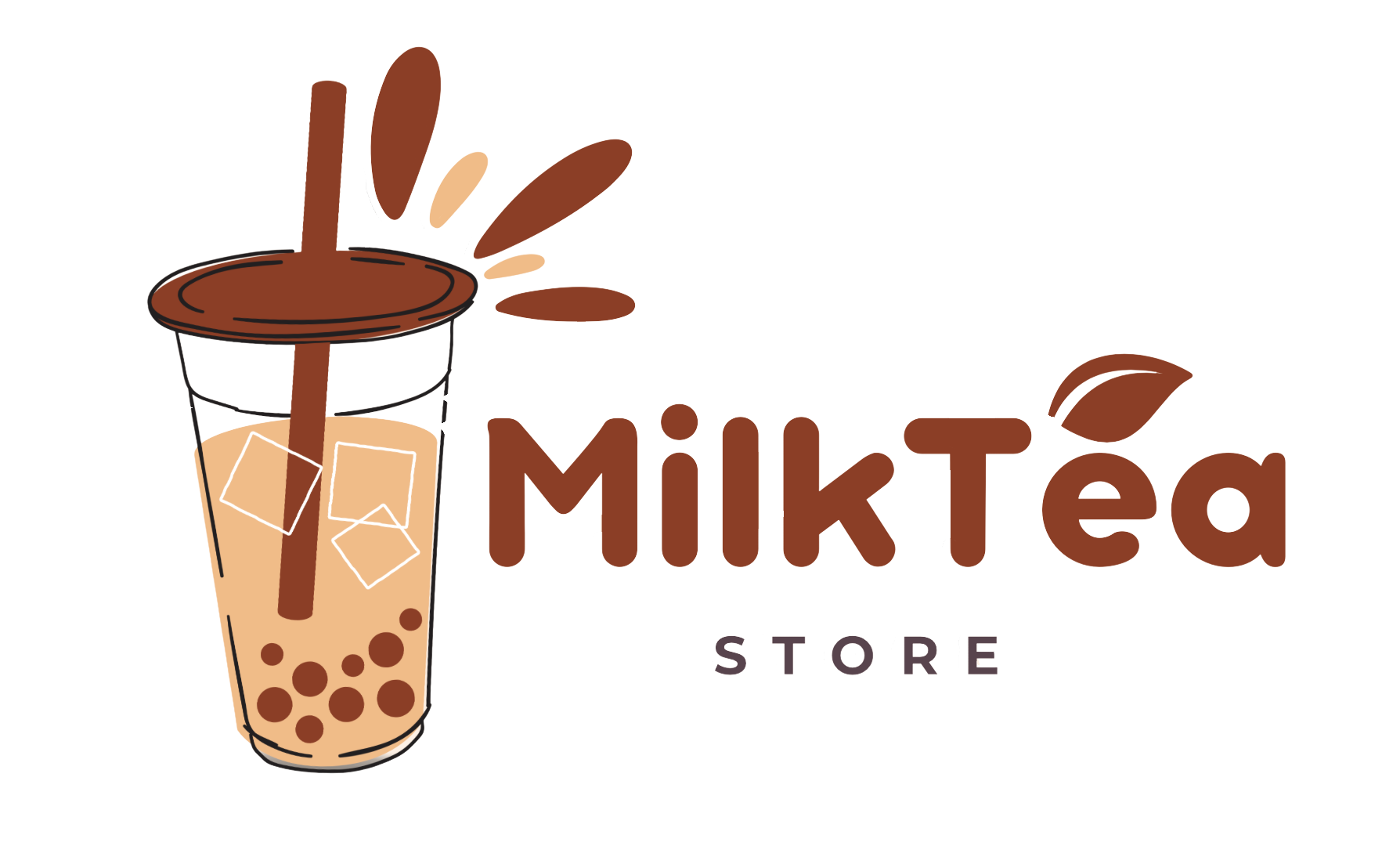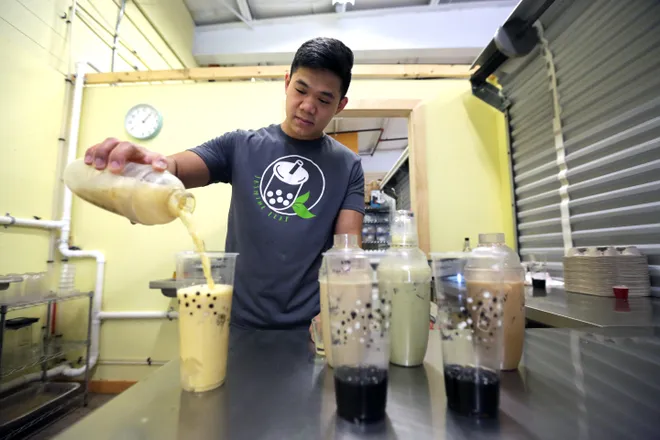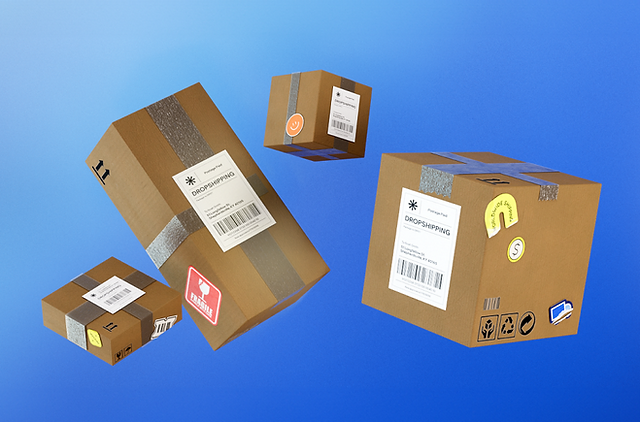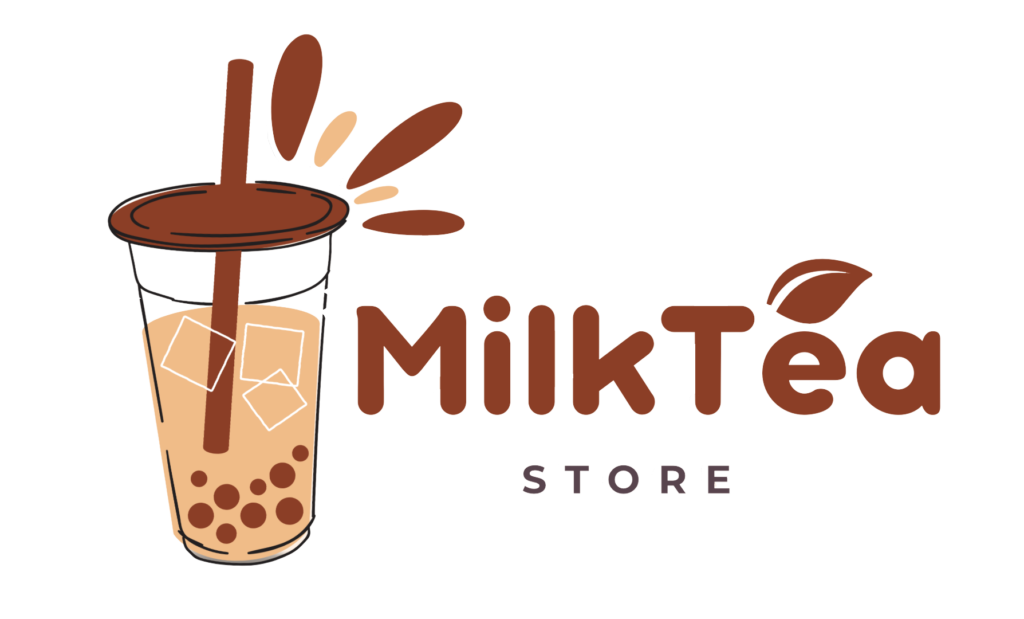Effective inventory control is the cornerstone of milk tea shop efficiency, ensuring optimal stock levels to meet demand while minimizing waste and costs.
The Ultimate Guide to Inventory Control for Milk Tea Shop Owners
The milk tea industry has experienced significant growth in recent years, with milk tea shops popping up in cities all over the world. As the demand for milk tea continues to rise, it is crucial for milk tea shop owners to have effective inventory control in place. Inventory control plays a vital role in the success of a milk tea shop, as it directly impacts profitability and customer satisfaction.
Understanding the Importance of Inventory Control for Milk Tea Shops
Effective inventory control is essential for milk tea shops to maximize profitability. By having a clear understanding of their inventory levels, shop owners can avoid overstocking or understocking products. Overstocking can lead to wastage and increased holding costs, while understocking can result in lost sales and dissatisfied customers. With proper inventory control, milk tea shops can ensure that they have the right amount of ingredients and supplies on hand to meet customer demand while minimizing costs.
Poor inventory management can have several negative consequences for milk tea shops. It can lead to stockouts, where popular items are not available, resulting in lost sales and dissatisfied customers. Additionally, poor inventory control can lead to excess inventory, which ties up capital and increases holding costs. It can also result in expired or spoiled products, leading to further financial losses. By implementing effective inventory control measures, milk tea shops can mitigate these risks and improve their overall operations.
On the other hand, effective inventory control offers several benefits for milk tea shops. It allows shop owners to accurately track their inventory levels, ensuring that they always have enough stock on hand to meet customer demand. This leads to improved customer satisfaction and repeat business. Effective inventory control also helps reduce holding costs by minimizing excess inventory and preventing wastage. Furthermore, it enables shop owners to make informed purchasing decisions based on accurate data, leading to better cost management and increased profitability.
Choosing the Right Inventory Management System for Your Shop
Selecting the right inventory management system is crucial for milk tea shops to effectively control their inventory. There are several factors to consider when choosing a system, such as the size of the shop, the volume of sales, and the complexity of the menu. It is important to choose a system that can handle the specific needs of a milk tea shop and provide real-time data for accurate inventory tracking.
There are several popular inventory management systems available for milk tea shops. One option is a manual system, where inventory is tracked using pen and paper or spreadsheets. This system is cost-effective but can be time-consuming and prone to human error. Here is an example:
| Inventory Item | Description | Reorder Point | Reorder Quantity | Current Stock |
|---|---|---|---|---|
| Tea Leaves | Various types for different flavors | 20 kg | 10 kg | 15 kg |
| Milk | Fresh milk for milk teas | 50 liters | 20 liters | 30 liters |
| Sweeteners | Sugar, honey, and syrup | 10 kg | 5 kg | 8 kg |
| Toppings | Pearls, jelly, pudding, etc. | Varies | Varies | Varies |
| Cups and Lids | Disposable cups and lids | 1000 pieces | 500 pieces | 700 pieces |
| Straws | Drinking straws | 1000 pieces | 500 pieces | 800 pieces |
| Flavorings | Various syrups and extracts | 5 bottles | 2 bottles | 3 bottles |
Another option is a barcode scanning system, where products are labeled with barcodes and scanned using a handheld device. This system offers faster and more accurate inventory tracking but requires an initial investment in hardware and software.
A third option is an automated inventory management system, which uses software to track inventory levels and generate reports. This system offers real-time data, automatic reordering, and integration with other business systems. While it may require a higher upfront cost, it can significantly streamline the inventory management process and improve overall efficiency.
Setting Up an Efficient Inventory Management System
Setting up an efficient inventory management system involves several steps. The first step is to conduct a thorough inventory count to determine the current stock levels. This count should include all ingredients, supplies, and finished products. Once the stock levels are known, it is important to categorize the inventory based on factors such as type, expiration date, and popularity.
Organizing the inventory in a logical manner is another important step in setting up an efficient system. This can be done by assigning specific storage areas for different categories of products. For example, ingredients can be stored separately from finished products to prevent cross-contamination. It is also helpful to label each product with its name, expiration date, and other relevant information.
Streamlining the inventory management process is another key aspect of setting up an efficient system. This can be achieved by implementing automated processes, such as automatic reordering when stock levels reach a certain threshold. It is also important to regularly review and update inventory records to ensure accuracy. By following these best practices, milk tea shops can establish an efficient inventory management system that improves overall operations.
Organizing Your Inventory: Tips and Tricks
Organizing inventory is crucial for milk tea shops to efficiently manage their stock levels. Categorizing inventory based on factors such as type, expiration date, and popularity can help shop owners easily locate and track their products. By organizing inventory in a logical manner, milk tea shops can minimize the time spent searching for items and reduce the risk of stockouts or expired products.
Labeling products is another important aspect of organizing inventory. Each product should be labeled with its name, expiration date, and any other relevant information. This makes it easier to identify and track products, especially when they are stored in bulk or in containers that are not transparent. Clear and legible labels also help prevent confusion and ensure that the right products are used at the right time.
Utilizing storage space effectively is another key factor in organizing inventory. Milk tea shops should make use of shelves, racks, and storage containers to maximize their storage capacity. It is important to arrange products in a way that allows for easy access and visibility. Additionally, it is helpful to regularly review and reorganize the storage space to accommodate changes in inventory levels or product offerings.
Tracking Your Inventory: Best Practices
Accurate inventory tracking is essential for milk tea shops to effectively manage their stock levels. There are several methods for tracking inventory, including manual counts, barcode scanning, and automated systems. Each method has its own benefits and drawbacks, and it is important to choose the one that best suits the needs of the shop.
Manual counts involve physically counting each item in the inventory and recording the results. This method is time-consuming and prone to human error, but it can be cost-effective for small shops with a limited number of products. Barcode scanning involves labeling each product with a barcode and using a handheld device to scan the barcodes during inventory counts. This method offers faster and more accurate tracking but requires an initial investment in hardware and software.
Automated inventory management systems use software to track inventory levels and generate reports. This method offers real-time data, automatic reordering, and integration with other business systems. While it may require a higher upfront cost, it can significantly streamline the inventory tracking process and improve overall efficiency.
Managing Your Stock Levels: Strategies for Success
Managing stock levels is crucial for milk tea shops to avoid overstocking or understocking products. Determining optimal stock levels involves analyzing historical sales data, monitoring customer demand, and considering factors such as seasonality and promotions. By accurately forecasting demand, milk tea shops can ensure that they always have enough stock on hand to meet customer needs without tying up excessive capital in inventory.
Reducing excess inventory is another important strategy for managing stock levels. Excess inventory ties up capital and increases holding costs, so it is important to minimize it as much as possible. This can be achieved by implementing just-in-time ordering, where products are ordered only when they are needed. It is also helpful to regularly review and update inventory records to identify slow-moving or obsolete items that can be discontinued or discounted.
Avoiding stock shortages is equally important for milk tea shops. Stockouts can lead to lost sales and dissatisfied customers, so it is crucial to have a system in place to prevent them. This can be achieved by setting up automatic reordering when stock levels reach a certain threshold or by closely monitoring sales data and adjusting orders accordingly.
Dealing with Excess Inventory: Solutions and Techniques
Dealing with excess inventory is a common challenge for milk tea shops. Excess inventory ties up capital and increases holding costs, so it is important to find solutions and techniques to reduce it. One strategy is to sell excess inventory through promotions or discounts. This can help generate revenue and clear out space for new products.
Another technique is to repurpose excess inventory. For example, if a milk tea shop has excess fruit syrup, it can be used to create new flavors or added to other products to enhance their taste. Repurposing excess inventory not only reduces waste but also allows for creativity and innovation in product offerings.
Reducing excess inventory can also be achieved by closely monitoring sales data and adjusting orders accordingly. By accurately forecasting demand and ordering only what is needed, milk tea shops can minimize the risk of overstocking. Additionally, regularly reviewing and updating inventory records can help identify slow-moving or obsolete items that can be discontinued or discounted.
Handling Stock Shortages: Effective Approaches
Stock shortages can have a negative impact on milk tea shops, leading to lost sales and dissatisfied customers. It is important to understand the causes of stock shortages and implement effective approaches to manage them.
One common cause of stock shortages is inaccurate forecasting of demand. To avoid this, milk tea shops should regularly review sales data and adjust orders accordingly. It is also helpful to monitor customer feedback and preferences to anticipate changes in demand.
Another cause of stock shortages is supplier issues, such as delayed deliveries or quality problems. To mitigate this risk, milk tea shops should establish strong relationships with reliable suppliers and have backup options in case of emergencies. It is also important to regularly communicate with suppliers to ensure that they are aware of the shop’s needs and can meet them in a timely manner.
Managing stock shortages also involves effective communication with staff. Shop owners should ensure that employees are trained on inventory management procedures and understand the importance of accurate stock counts. Regularly reviewing and updating inventory records can help identify potential stock shortages and allow for timely action to be taken.
Implementing a First-In-First-Out (FIFO) System
Implementing a First-In-First-Out (FIFO) system is crucial for milk tea shops to prevent spoilage and wastage of ingredients. The FIFO system ensures that the oldest products are used or sold first, reducing the risk of expired or spoiled items.
The FIFO system works by organizing products based on their expiration dates. When new stock is received, it is placed behind existing stock, so that the older stock is used first. This ensures that products are used in the order they were received, minimizing the risk of spoilage.
There are several benefits to using the FIFO system. It helps reduce waste by ensuring that products are used before they expire. It also improves product quality and customer satisfaction, as customers are more likely to receive fresh and high-quality products. Additionally, the FIFO system helps shop owners accurately track their inventory levels and make informed purchasing decisions.
Implementing the FIFO system requires clear labeling of products with their expiration dates and regular monitoring of stock levels. It is important to train staff on the importance of using the oldest products first and regularly review and update inventory records to ensure accuracy.
Conducting Regular Inventory Audits: Why and How
Regular inventory audits are essential for milk tea shops to ensure accurate stock counts and identify any discrepancies or issues. Conducting audits helps shop owners maintain control over their inventory and make informed business decisions.
Inventory audits involve physically counting each item in the inventory and comparing the results to the recorded stock levels. This can be done manually or using barcode scanning or automated systems. The frequency of audits depends on factors such as the size of the shop, the volume of sales, and the complexity of the menu. However, it is recommended to conduct audits at least once a month to ensure accuracy.
There are several steps to take when conducting an inventory audit. The first step is to prepare by gathering all necessary tools and materials, such as clipboards, pens, and inventory sheets. The next step is to physically count each item in the inventory and record the results. It is important to pay attention to details and ensure that all items are counted accurately.
After the audit is complete, it is important to compare the recorded stock levels with the actual counts and identify any discrepancies. This can help identify issues such as theft, spoilage, or inaccurate recording. It is also helpful to review and update inventory records based on the audit results to ensure accuracy.
Leveraging Technology for Better Inventory Control: Tools and Software
Leveraging technology can significantly improve inventory control for milk tea shops. There are several popular inventory management software options available that can streamline the inventory tracking process and provide real-time data for accurate stock counts.
One popular inventory management software for milk tea shops is Square for Retail. This software offers features such as automatic reordering, real-time inventory tracking, and integration with other business systems. It also provides detailed reports and analytics to help shop owners make informed business decisions.
Another option is Lightspeed Retail, which offers similar features to Square for Retail but also includes additional functionalities such as customer relationship management (CRM) and employee management. This software is suitable for larger milk tea shops that require more advanced features.
ShopKeep is another popular choice for milk tea shops, offering features such as barcode scanning, automatic reordering, and sales analytics. It also provides integration with other business systems and offers a user-friendly interface that is easy to navigate.
When selecting inventory management software, it is important to consider factors such as cost, ease of use, scalability, and customer support. It is also helpful to read reviews and testimonials from other milk tea shop owners to get an idea of the software’s effectiveness and suitability for the specific needs of the shop.
Effective inventory control is crucial for milk tea shops to maximize profitability and customer satisfaction. By implementing the right inventory management system, organizing inventory in a logical manner, tracking inventory accurately, and managing stock levels effectively, milk tea shops can improve their overall operations and reduce costs.
Leveraging technology and implementing best practices can further enhance inventory control and streamline the inventory management process. With proper inventory control in place, milk tea shops can meet customer demand, minimize waste, and increase profitability.
Originally posted 2024-04-21 02:48:17.






